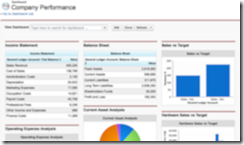
Get your FREE 30-day trial.
Please complete all fields.
In the past year, we’ve seen the rise of the Agile BI movement, as end users wanted control over the data and the analytics on it, and to get answers faster. 
When we were looking at the enhancements that were requested on IdeaExchange, we knew that meant that the Analytics features had to be
These are already the core values, and the themes that drive all the analytic features already at the heart of our system, but we needed more expressive power, to make reports richer, without making them more complicated.
Today, if you want to create a richer report than you can in salesforce.com, you have to go to a single-purpose BI tool – but these often come with drawbacks. Either the license to create reports is very expensive, and so few people can use it, or it’s hard to use, and few people use it. Also, these other solutions are usually expensive, and typically come with a minimum price, even for 3 users, so smaller companies can’t even get started. Then you’ll probably end up with a set of compromises – different sharing model, different data model, different field names, not real time, more logins, not collaborative, no easy link back to the source data, etc, etc, etc.
Even if you get started, the odds are against you - Analytics and BI are known for failure – 70-80% of BI projects fail.
If you were are cloudforce NY, you’d have heard about the introduction of a new analytics product from us.
We’ve decided to take a set of features that would be in a typical BI tool, and make them part of an add-on to a normal salesforce user license. There are two things different about this:
We wanted to make sure we didn’t fall prey to the usual BI problems, so we’ve tried to design the product, the licensing, and the experience to avoid the problems.
There are four parts to the Analytics Edition in Spring’12
No, we’re going to keep enhancing the features included with Sales Cloud, Service Cloud, or Force.com licensses. For instance, increasing the numbers of report folders, the filters on dashboards. The iPad app is going to get more enhancements. We are also working on more performance improvements. In general, features that you’d find in a BI tool would go into Analytics Edition, other features would be included with the other licenses.
Packaging and pricing are always decided later. And building these features is hard, and has taken a big investment from salesforce.com. Without the investment, we’d have never been able to deliver the features, and not every customer needs them. Maybe you’ve already spend millions on BI project, and maybe you are part of the 20% of success stories, so you won’t want this from us.
But if you aren’t, you need more power to help you make better decisions, integrated in salesforce, real-time, and using the tools you are used to, you might be interested in talking to us.